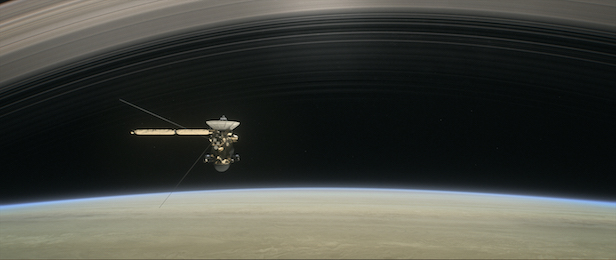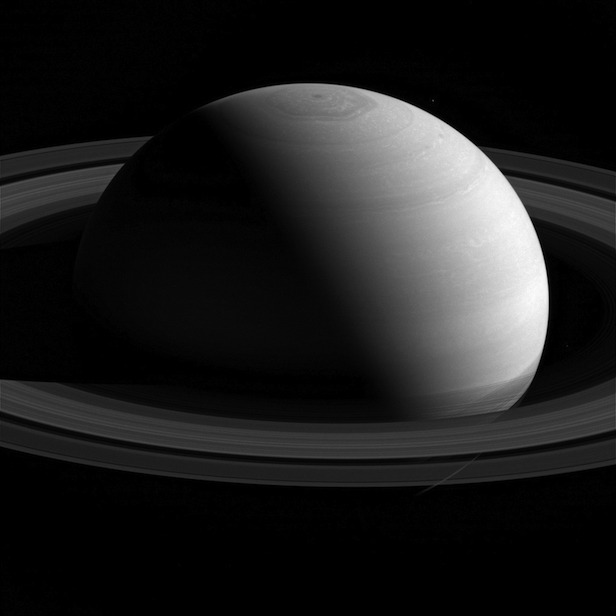Cassini’s end draws near with only five orbits to go
As the spacecraft approaches its Grand Finale, it is now attempting its closest ever observations of Saturn

The original Cassini-Huygens spacecraft was launched in October 1997. Image credit: NASA/JPL-Caltech
On 14 August 2017 at 12:22 a.m. EDT, the Cassini spacecraft will make the first of its final five orbits, before plunging into the upper atmosphere of Saturn. These culminating orbits will make the first measurements of the ringed planet’s upper atmosphere, which will provide vital evidence for – or against – our models of Saturn.
The closest approach Cassini will make, without hopefully crashing into the atmosphere, will be between 1,010 and 1,060 miles (1,630 and 1,710 kilometres) above the cloud tops.
“Cassini’s Titan flybys prepared us for these rapid passes through Saturn’s upper atmosphere,” says Earl Maize, Cassini project manager at NASA’s Jet Propulsion Laboratory (JPL). “Thanks to our past experience, the team is confident that we understand how the spacecraft will behave at the atmospheric densities our models predict.”
Scientists are expecting to enter a dense atmosphere on Saturn, much like the one they encountered in the flyby of its moon, Titan. Small rocket thrusters onboard will enable stability to be maintained, but their use will also tell us about the density of the atmosphere.

By gathering data on Saturn’s atmosphere, we gather a better understanding of the ringed gas giant. Image credit: NASA/JPL-Caltech/Space Science Institute
Scientists are expecting the thrusters to operate at between ten and sixty percent of their capacity. Anything more will tell us the atmosphere is denser then previously thought, which will rise Cassini by about 120 miles (200 kilometres), this is also known as a ‘pop-up manoeuvre’.
On the other hand, if the thrusters work anything less than normal, this presents strong evidence that the atmosphere is much less dense then theorised. If this is the case for the first three orbits, engineers have the option to use the ‘pop-down’ option. This will lower the spacecraft for the last two orbits.
“As it makes these five dips into Saturn, followed by its final plunge, Cassini will become the first Saturn atmospheric probe,” says Linda Spilker, Cassini project scientist at JPL. “It’s long been a goal in planetary exploration to send a dedicated probe into the atmosphere of Saturn, and we’re laying the groundwork for future exploration with this first foray.”
On 11 September 2017, the previously mentioned moon, Titan, will act as a ‘gravitational brake’ for the Cassini probe. This will slow down the spacecraft, causing it to eventually crash – and disintegrate – into the atmosphere of the ringed gas giant. In the meantime, all of Cassini’s seven instruments will be switched on and in full use, gathering whatever information they can and transmitting it back to Earth. This provides one final push for understanding the complexity of such a mysterious gas giant, before bringing an extremely successful mission to an end.
Keep up to date with the latest space news in All About Space – available every month for just £4.99. Alternatively you can subscribe here for a fraction of the price!




